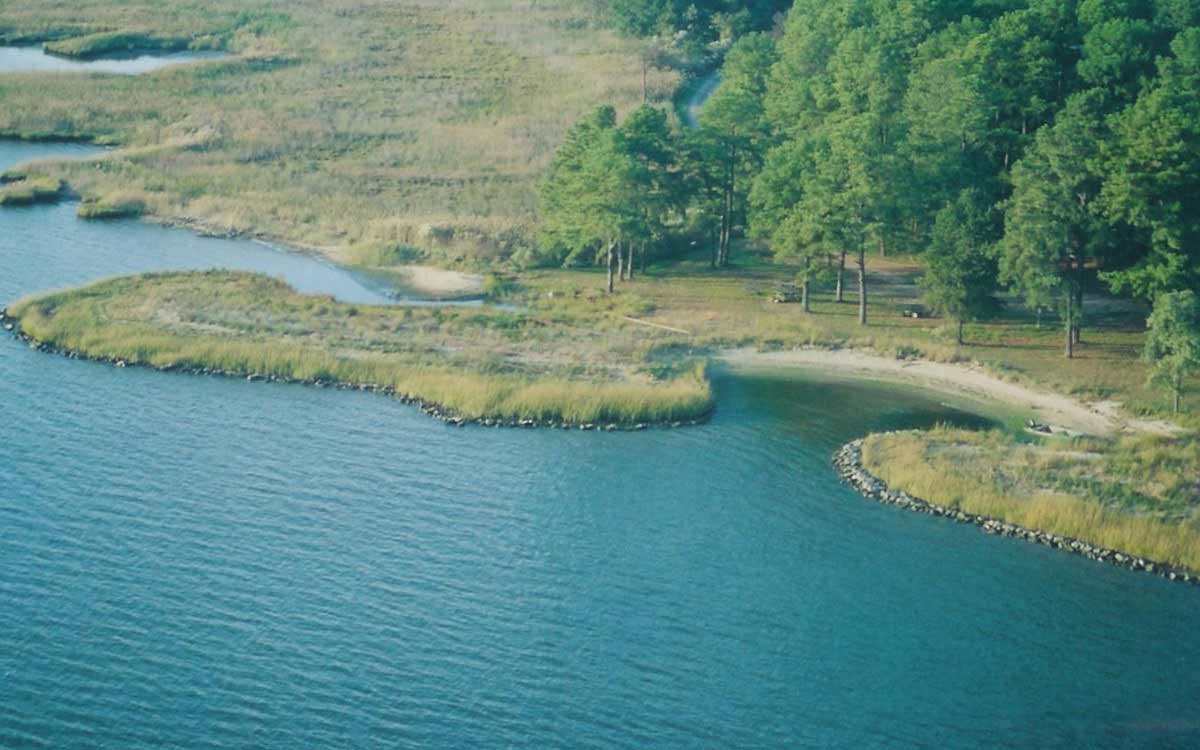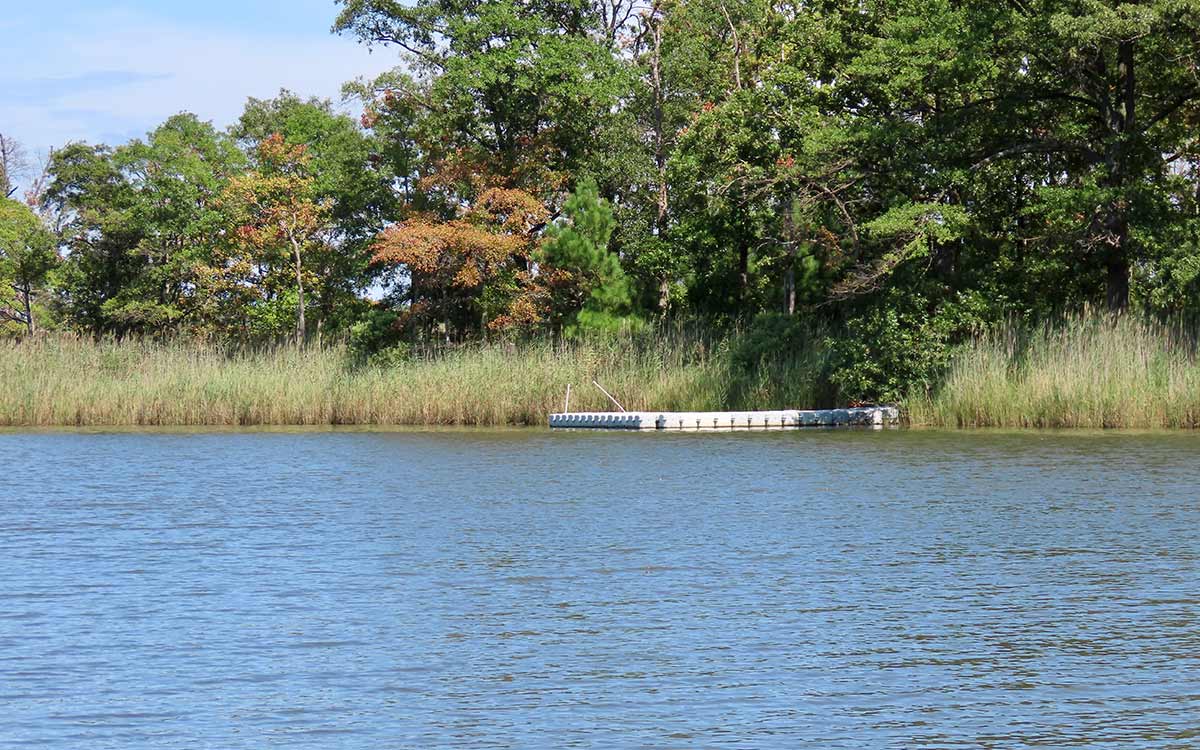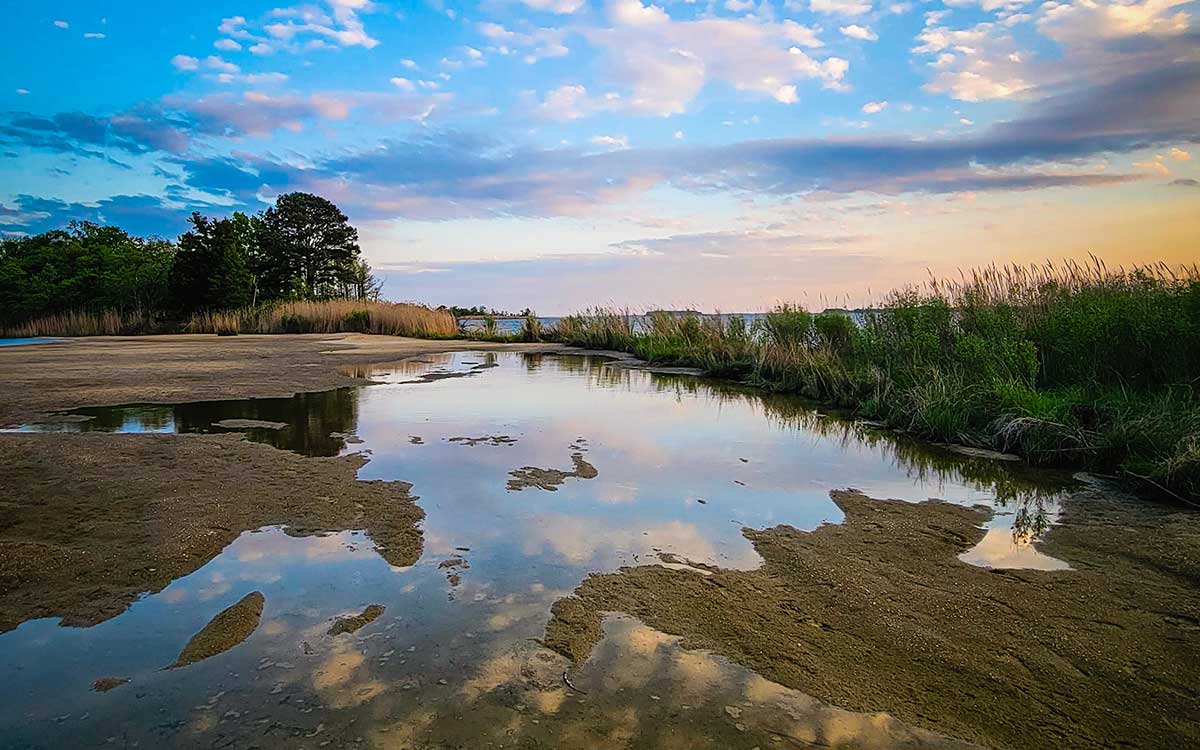Shoreline Erosion Solutions: Balancing Bay Protection with Wildlife Preservation
The environmental problems and costs associated with shoreline erosion are visible to anyone along the waterfront of the Chesapeake Bay. Traditionally, property owners used whatever materials were at hand to keep their land from crumbling into the bay. Today much of the shoreline is hardened with timber bulkhead and rock, which can lead to increased erosion on sediment-starved beaches, the loss of important nesting and nursery grounds for wildlife, and impaired access to the water.
Constructing a “living shoreline” replicating the salt marshes of the Chesapeake Bay creates viable shoreline habitat for wildlife, curbs erosion and improves water quality. In some cases, placing a living “breakwater” offshore can not only reduce wave energy but help rejuvenate oyster and sport fish populations.
Construction materials can include bioengineered materials such as coconut-fiber logs and other natural materials that allow plants to take root. They are combined with sand and native plantings.
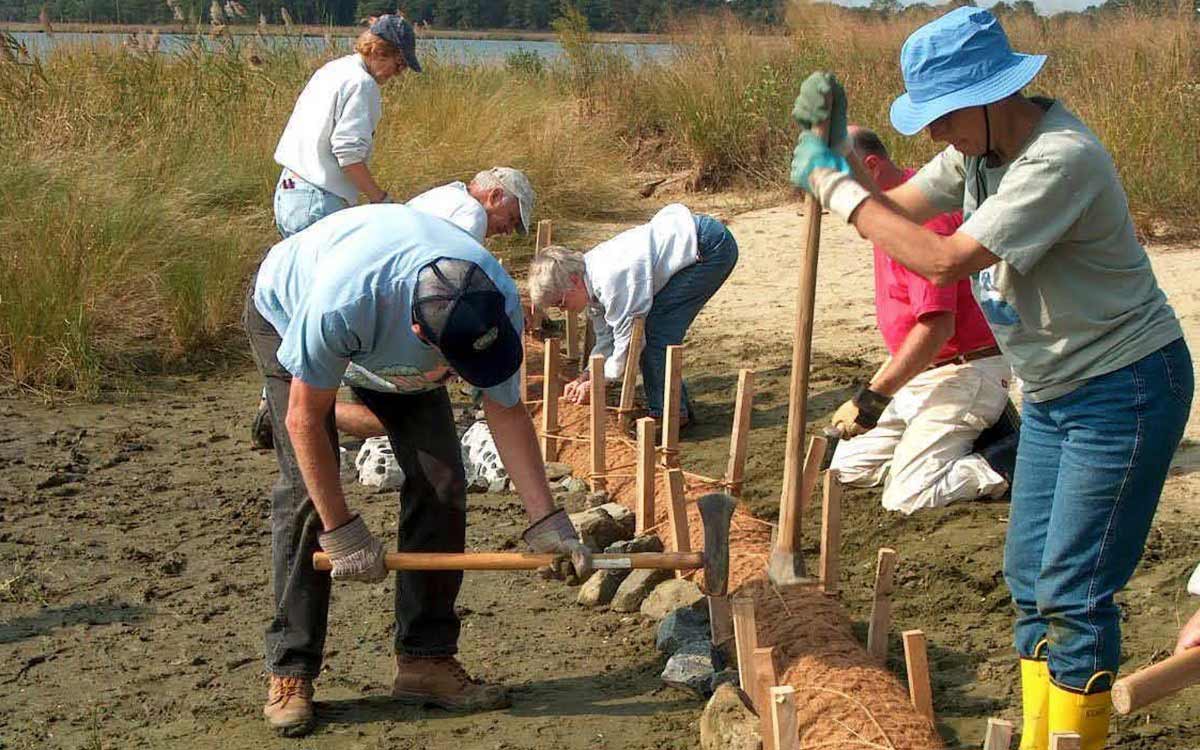
cbec-living-shoreline2
Volunteers install a “biolog” for soil stabilization on this small piece of eroding shoreline.
Living Shorelines and Erosion Control: Coastal Habitat Restoration
CBEC was the site of the first Living Shoreline demonstration project in the state of Maryland. Initiated in 2002, it restored 400 feet of shoreline and created two acres of tidal wetlands with crucial habitat for species like diamondback terrapins, horseshoe crabs and various shorebirds. The project constructed a living breakwater from recycled concrete rubble from Memorial Stadium, creating habitat for oysters and fish while reducing wave energy.
In 2023, two large shoreline projects (representing an investment of more than $1 million) were completed, including the installation of two breakwaters and the creation of one acre of tidal wetlands on the North Point to help stabilize a half-mile of coastal shoreline. This initiative also planted 10,000 native plants to enhance coastal marsh habitats and protect 100 acres of forested marshlands adjacent to the project area from further erosion. Three large groins were installed on the Southern Point to prevent further erosion due to tidal action and boat traffic.
In 2025, CBEC will create pocket beaches within these three groin areas, using sandy dredge materials from Kent Narrows and adding more than 25,000 plants to further enhance coastal resiliency and wildlife habitats.
Thin Layer Placement and Marsh Restoration: Enhancing Marsh Elevation
To combat the loss of wetland habitat due to subsidence and sea level rise, CBEC is enhancing approximately four acres of tidal marsh by applying thin-layer sediment on the north side of Marshy Creek. This involves placing approximately 6,500 cubic yards of dredged material to raise the elevation of marsh surfaces and restore plant vigor.
This will bolster the entire 510-acre CBEC peninsula by increasing marsh resiliency, improving water quality and providing valuable wildlife habitat. This effort complements other shoreline resilience projects (such as reef balls and living shoreline enhancements) stabilizing marshland edges. The sediment application also helps restore plant health, making CBEC’s coastal wetlands more resilient to climate change.
Benefits of a Living Shoreline
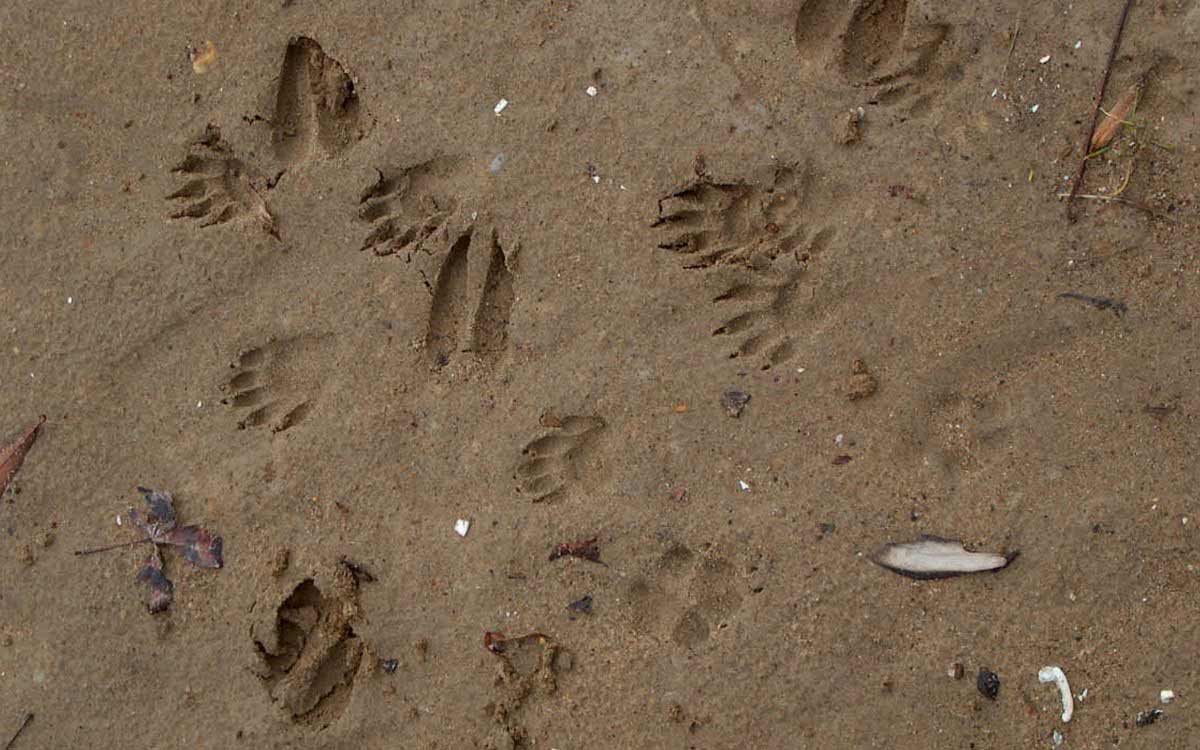
cbec-living-shoreline5
Raccoons, deer and foxes visit these restored areas as well as horseshoe crabs and wading birds.
Creating Your Own Living Shoreline
A living shoreline is a great option for homeowners whose property receives low to medium wave energies, like those along tidal creeks, rivers and some locations along the Chesapeake Bay. A living shoreline can not only increase the aesthetic value of the property but (if installed correctly) create shallow water habitat, stabilize sediment and improve water quality. Plus, it can be done at a fraction of the cost of bulkheads, revetments or similar installations. Those cost $500 – $1,200 per foot installed, while a living shoreline can cost $150 – $500 per foot installed.
Maryland has a wide range of grants, loans and cost-share programs providing financial assistance to those undertaking a shoreline restoration project.
Anyone considering a living shoreline should first check to see if and what permits are needed. No permits are required to plant vegetation on existing substrate on tidal or non-tidal shorelines, unless fill is introduced or heavy equipment is required. However, a permit is required for any alteration of shoreline in tidal areas and wetlands. Those interested need to file a joint federal/state permit application with the Army Corps of Engineers.

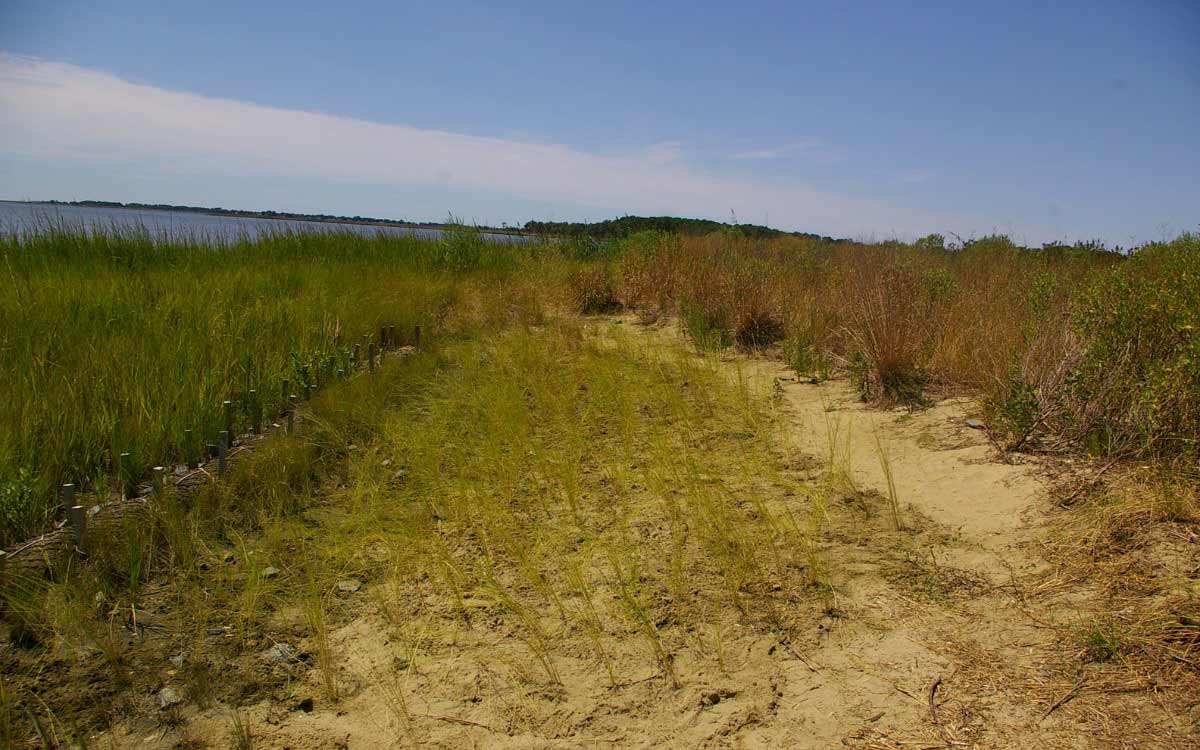
- Before: Students plant native spartina grasses behind the biolog ultimately restoring the missing fringe marsh.
- After: The finished product restored 100 sq. ft of fringe marsh for wildlife. In one year these grasses will take hold and stabilize the area.

